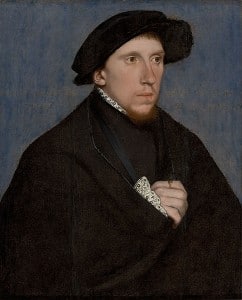
On 12th December 1546, Thomas Howard, 3rd Duke of Norfolk, and his son, Henry Howard, Earl of Surrey, were arrested and taken from Lord Chancellor Wriothesley’s house in Ely Place, Holborn, where they had been interrogated, to the Tower of London. Norfolk was taken to the Tower by barge but his son suffered the humiliation of being led through the streets of London on foot.
Surrey’s biographer, Edmond Bapst, writes of how Surrey handled this humiliation:
“Probably the Earl’s enemies had calculated that this march through populous neighbourhoods would a painful experience and that all those who had once suffered his haughtiness would hurry to cover him with boos and jeers now that he was disarmed and almost certainly destined to die. No such thing occurred. Though Surrey had cared little for what the people thought of him, he had conquered them with his lordly ways; London liked this brilliant, fiery young man, so lofty of appearance, so chivalrous of temperament; and so, as he went captive through the streets, the crowd offered nothing but loud sympathy, saying aloud that it was a pity to put so fair a knight in the Tower.”
The two men had been interrogated after accusations had been made regarding Surrey incorporating the royal arms into his coat of arms, showing that he had “monarchic ambitions”, and allegedly telling his sister, Mary, widow of the Duke of Richmond, to try and become the King’s mistress so that her family would be favoured. There were, of course, many at court who wanted to see the fall of this powerful family.
You can read more about the fall of the Howards in my previous article 12th December 1546 – The Duke of Norfolk and the Earl of Surrey go to the Tower.
Notes and Sources
- Two Gentleman Poets at the Court of Henry VIII: George Boleyn and Henry Howard, Edmond Bapst, p298-299
- “Howard, Thomas, third duke of Norfolk (1473-1554)”, Michael A. R. Graves, Oxford Dictionary of National Biography, 2004